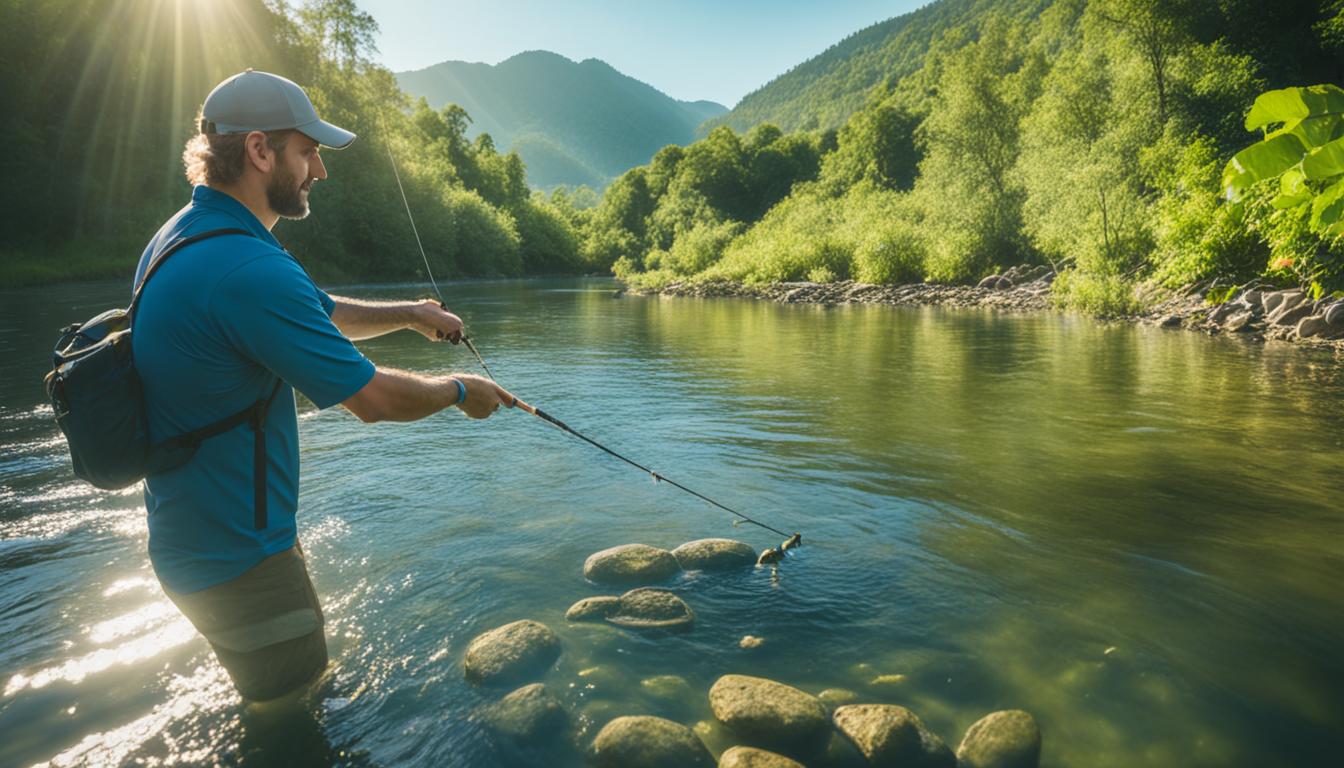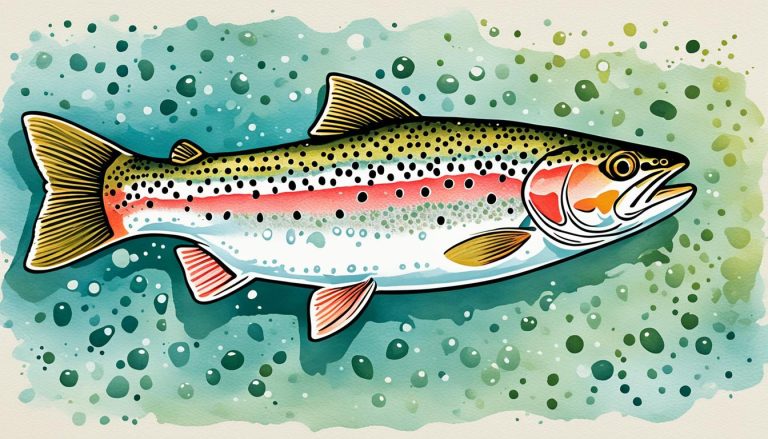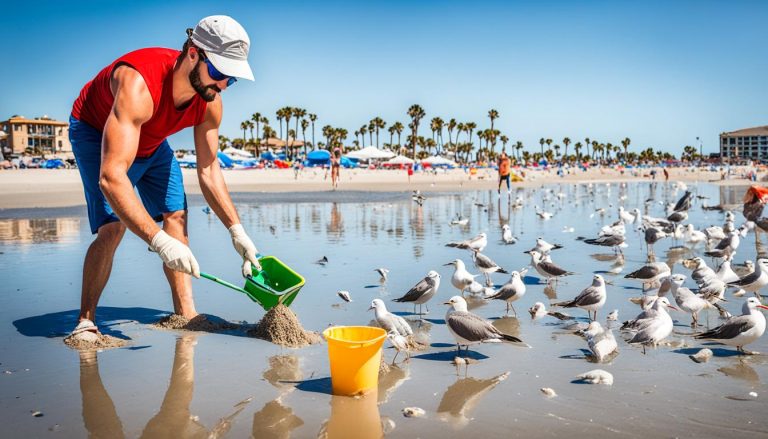Welcome to our comprehensive guide on how to catch Tilapia! Whether you’re a beginner or a seasoned angler, this article will provide you with the fishing techniques you need to reel in this popular freshwater fish. Catching Tilapia requires a combination of skill, knowledge, and the right gear. In this guide, we’ll cover everything from essential equipment to effective techniques that will greatly enhance your chances of success. So, let’s dive in and learn how to catch Tilapia like a pro!
Before we delve into the fishing techniques, it’s important to have the right gear for Tilapia fishing. In the next section, we’ll explore the essential equipment, including fishing rods, reels, lines, bait, and hooks. Whether you’re a beginner or a seasoned angler, having the proper gear can make all the difference in your fishing expeditions.
Essential Gear for Tilapia Fishing
Before you hit the water, it’s important to have the right gear for Tilapia fishing. The right equipment can greatly increase your chances of a successful catch. Here are the essential pieces of gear you’ll need:
Fishing Rods
Choosing the right fishing rod is key to effectively reeling in Tilapia. Look for a lightweight rod with a sensitive tip that allows you to detect even the slightest nibble. A versatile rod with medium to light power is suitable for Tilapia fishing.
Fishing Reels
A quality fishing reel that matches your chosen rod is essential. Opt for a spinning reel that offers smooth drag and a high gear ratio, allowing for quick line retrieval. This will help you land Tilapia with ease.
Fishing Line
When it comes to fishing line, consider using monofilament or fluorocarbon lines of 6 to 10-pound test strength. These lines offer good strength and sensitivity, allowing you to feel the bites and set the hook efficiently.
Bait
For Tilapia fishing, live bait such as worms, crickets, or small minnows can be highly effective. You can also try using artificial baits like small jigs, soft plastics, or spinnerbaits. Experiment with different bait options to see what works best in your fishing spot.
Hooks
When choosing hooks for Tilapia fishing, opt for small-sized hooks between size 6 and 10. These smaller hooks are easier for Tilapia to take into their mouths, leading to a higher hookup rate. Additionally, consider using circle hooks, which can minimize deep hooking and help with catch and release efforts.
Remember to check local fishing regulations regarding gear restrictions and hook size limits before you head out. Now that you’re equipped with the right gear, you’re ready to embark on your Tilapia fishing adventure!
| Gear | Description |
|---|---|
| Fishing Rods | Choose a lightweight rod with a sensitive tip |
| Fishing Reels | Opt for a spinning reel with smooth drag and high gear ratio |
| Fishing Line | Monofilament or fluorocarbon lines of 6 to 10-pound test strength |
| Bait | Live bait like worms, crickets, or small minnows; artificial baits like jigs and spinnerbaits |
| Hooks | Small-sized hooks between size 6 and 10; consider using circle hooks |
Ideal Fishing Spots for Tilapia
Finding the ideal fishing spot is crucial when it comes to catching Tilapia. These freshwater fish thrive in warm water and are often found in shallow areas with abundant vegetation. In this section, we’ll uncover the top locations where Tilapia are known to frequent, and provide tips on how to maximize your chances of success.
When searching for Tilapia fishing spots, look for freshwater bodies such as lakes, ponds, and rivers. These locations provide the perfect environment for Tilapia to thrive, as they offer the necessary warmth and nutrients that these fish require.
One key characteristic to look for is warm water. Tilapia are most active in water temperatures between 78 to 85 degrees Fahrenheit (25 to 30 degrees Celsius). During the warmer months, these fish are often found in the shallows, where the water is warmer and sunlight reaches the vegetation, providing a suitable habitat for Tilapia.
Vegetation is another important factor to consider. Tilapia are known to seek shelter and feed amongst plants such as lily pads, submerged weeds, and other types of aquatic vegetation. These areas provide Tilapia with protection from predators and serve as a food source, attracting the fish to these spots.
To increase your chances of catching Tilapia, pay attention to visual cues such as schools of fish swimming near the surface or jumping out of the water. These behaviors indicate active Tilapia feeding areas and can be a good indicator of prime fishing spots.
Tip: To find Tilapia fishing spots, look for warm shallow areas with abundant vegetation in freshwater bodies like lakes, ponds, and rivers. Pay attention to visual cues such as schools of fish swimming near the surface or jumping out of the water.
By targeting Tilapia fishing spots with these characteristics, you’ll greatly increase your chances of a successful catch. Take advantage of the warm water, shallow areas, and vegetation to attract Tilapia to your bait and enjoy a rewarding fishing experience.

| Freshwater Fishing Spots | Characteristics | Best Season |
|---|---|---|
| Lakes | Abundant vegetation, warm water | Spring and summer |
| Ponds | Shallow areas, vegetation | Year-round |
| Rivers | Shallow areas, warm water, vegetation | Spring and fall |
Key Characteristics of Ideal Tilapia Fishing Spots:
- Warm water temperatures (78 to 85°F / 25 to 30°C)
- Shallow areas
- Abundant vegetation
Effective Techniques for Tilapia Fishing
Now that you have the right gear and know where to find Tilapia, it’s time to learn some effective fishing techniques. In this section, we’ll discuss various methods that have proven to be successful for Tilapia fishing. Whether you prefer bottom fishing, float fishing, fly fishing, or jigging, we’ve got you covered.
Bottom Fishing
Bottom fishing is a popular technique for catching Tilapia. By placing your bait on or near the lake or riverbed, you can attract Tilapia and entice them to bite. To effectively bottom fish, use sturdy fishing gear, such as a medium-action fishing rod and a spinning reel with a high gear ratio for faster retrieval. Choose a bait that Tilapia find irresistible, such as worms, insects, or small pieces of fish. Cast your line towards the bottom and wait patiently for the Tilapia to strike.
Float Fishing
Float fishing is another effective technique for targeting Tilapia. With float fishing, you’ll use a float to suspend your bait at a specific depth in the water column. Tilapia are known to swim at various depths, so adjusting the position of your float allows you to present your bait at the right level. Use a lightweight fishing rod and a fixed spool reel for accurate casting. Employ small hooks and baits like bread, corn, or small pieces of fruit to entice Tilapia near the surface. Keep an eye on your float and be ready to strike when it disappears beneath the water.
Fly Fishing
Fly fishing can be a rewarding technique for catching Tilapia. This method involves using lightweight, artificial flies that mimic the insects and small creatures Tilapia feed on. Choose a fly rod and reel suitable for freshwater fishing, and use techniques like the “false cast” to present your fly with precision. Experiment with different flies, such as nymphs, streamers, or small poppers, to find the one that entices Tilapia to bite. Cast your fly near vegetation or other areas where Tilapia are likely to gather.
Jigging
Jigging is a versatile technique that can be highly effective for Tilapia fishing. With jigging, you’ll use a jig lure that imitates small fish or other prey that Tilapia feed on. To jig effectively, use a medium or medium-heavy spinning rod and a spinning reel with a high gear ratio for fast retrieval. Cast your lure, then quickly lift and drop it in a jigging motion to mimic the movements of prey. Vary the speed and depth of your jigging to find the most enticing presentation. Tilapia are often attracted to the sudden movements and vibrations created by jigging.
By mastering these techniques and understanding the nuances of each method, you’ll greatly increase your chances of a successful Tilapia fishing trip. Remember to experiment with different baits, casting styles, and retrieval methods to find what works best for you. Happy fishing!
Tips for a Successful Tilapia Catch
Catching Tilapia requires more than just the right gear and techniques. To increase your chances of a successful catch, consider the following tips:
- Patience: Tilapia fishing requires patience. These fish can be finicky and may take some time to bite. Stay calm and persistent, and avoid rushing the process.
- Observation Skills: Pay attention to your surroundings and look for signs of Tilapia activity. Watch for movement in the water, ripples, or jumping fish. Observing their behavior can help you locate their feeding areas.
- Stealth: Tilapia can be easily spooked, so it’s important to approach the fishing spot quietly. Keep noise to a minimum, avoid sudden movements, and be mindful of your shadow.
- Fishing at Dawn or Dusk: Tilapia are more active during dawn and dusk when they feed near the surface. Take advantage of these times for a higher chance of success.
By practicing patience, honing your observation skills, using stealth, and fishing at the right times, you’ll greatly improve your chances of a rewarding Tilapia fishing experience.
Check out the table below for a summary of these tips:
| Tip | Description |
|---|---|
| Patience | Stay calm and persistent as Tilapia can take some time to bite. |
| Observation Skills | Watch for signs of Tilapia activity and locate their feeding areas. |
| Stealth | Approach the fishing spot quietly to avoid spooking the fish. |
| Fishing at Dawn or Dusk | Fish during these times when Tilapia are more active near the surface. |

Remember, mastering these tips takes time and practice. Stay persistent, stay observant, and enjoy the rewarding experience of catching Tilapia.
Tilapia Fishing Regulations and Environmental Considerations
As responsible anglers, it’s crucial to understand the fishing regulations and environmental considerations related to Tilapia fishing. By following these guidelines, we can contribute to the conservation of Tilapia populations and ensure the sustainability of this prized species.
Tilapia fishing regulations vary depending on the location and governing bodies. It is essential to familiarize yourself with the specific regulations in your area before heading out on your fishing trip. Some common regulations may include:
- Fishing Licenses: Most regions require anglers to possess a valid fishing license. This license not only ensures that you are legally allowed to fish but also helps support conservation efforts.
- Bag Limits: Bag limits are restrictions on the number of fish you are allowed to keep per day or per fishing trip. These limits aim to prevent overfishing and maintain healthy Tilapia populations.
Respecting nature is paramount when fishing for Tilapia. Here are some environmental considerations to keep in mind:
- Conservation: Tilapia play a crucial role in maintaining the balance of aquatic ecosystems. It is important to practice catch and release whenever possible to preserve the population and ecosystem health.
- Respecting Habitat: Tilapia thrive in freshwater environments with abundant vegetation. Avoid damaging the habitat by practicing proper catch handling techniques and minimizing disturbance to vegetation and other natural features.
- Proper Disposal: Dispose of any waste or litter appropriately, ensuring it does not end up in the water. This helps maintain water quality and prevents harm to wildlife.
Remember, as anglers, we have a responsibility to conserve the natural resources we enjoy. By adhering to Tilapia fishing regulations and respecting the environment, we can contribute to the long-term sustainability of Tilapia populations and ensure future generations can also experience the joy of catching these remarkable fish.
Cleaning and Cooking Your Tilapia
Now that you’ve successfully caught some fresh Tilapia, it’s time to prepare it for a mouthwatering meal. In this section, we’ll walk you through the process of cleaning and cooking your Tilapia, ensuring a delicious and satisfying dining experience.
First, let’s start with the cleaning process. Rinse the Tilapia thoroughly under cold water, removing any dirt or debris. Using a sharp knife, make a shallow cut along the belly, from the tail to the head, and carefully remove the internal organs. Clean out the remaining blood and rinse again. Pat the Tilapia dry with a paper towel, and it’s ready to cook!
Now, let’s explore some delectable recipes for grilling, baking, and frying your Tilapia. For a flavorful grilling option, marinate the Tilapia in a mixture of olive oil, lemon juice, garlic, and your favorite herbs and spices. Then, grill over medium heat for around 6-8 minutes per side until the fish is flaky and opaque.
If baking is your preferred cooking method, season the Tilapia with salt, pepper, and your choice of herbs and place it on a greased baking sheet. Bake at 400°F (200°C) for about 12-15 minutes until the fish is tender and easily flakes with a fork.
Lastly, if you’re in the mood for a crispy and golden delight, frying your Tilapia is a great option. Coat the Tilapia fillets in a mixture of flour, salt, pepper, and any additional seasonings you desire. Heat vegetable oil in a skillet over medium-high heat and fry the Tilapia for approximately 3-4 minutes per side until it turns golden brown.
With these simple yet delicious recipes, you can savor the delicate and mild flavor of Tilapia prepared to perfection. So gather your loved ones, put on your chef’s hat, and enjoy the fruits of your fishing adventure!




